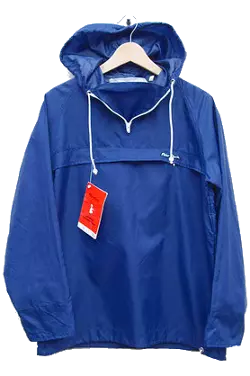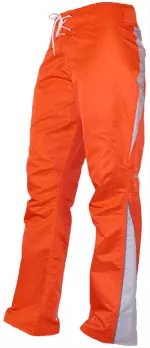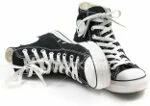Open Water Adventure
This section is all about wet and wild adventures that get you fit for many watersports. Here you find tips and stories you can use for your own trips.Swimming in Clothes
An important part is the swim training in your adventure clothes, to prepare you for wet an wild adventures in open water. For most watersports you will wear more than just shorts or a bikini. Your clothing will vary depending on the weather and what sport you're training for, unless you swim in clothes just for fun.
For this training wear the clothes you would wear for your watersports. Include all the kit you wear for your sport, even socks and shoes where applicable. The point is to make the training as realistic as possible.
Training Objective
The point of this training is to get you familiar with your watersport clothing and adventure kit. Most watersports involve getting wet from spray or going into the water, sometimes often, sometimes only occasionally. To keep warm you wear special clothing designed for the water, plus the usual sportswear or casuals. Function and comfort are as important as preparedness and familiarity.
Regular Sessions
With regular swim training in these clothes you can prepare and get very fit. We recommed 2-3 swim sessions a week for resistance swim training. Alternate this 2-3 times a week with endurance swimming just in your sleek swimsuit.Swim about 200-400 meters in each session. Notice how the clothes slow you down and how exhausted you get. The more you train, the longer you last.
Variety
Once you're familiar with your watersports kit, vary your training out more and more to keep it interesting. Try clothes for other watersports, add webbed gloves or flippers.
Once you've tried all the watersports kit, switch to casual clothes like hoodies and jeans over a comfy base layer. See what differece all these clothes make to your swimming ability. This may save your life one day.
Clothes for Adventure Swimming
Safety Kit
Be prepared to wear appropriate safety equipment when necessary, like a life jacket. Put on a buoyancy aid and helmet in more challenging terrain. A ball cap or visor, sunglasses and sunscreen are useful. If you wear glasses then it is advisable to tie them on.
Creature Comforts
Bring a large beach towel, sun block, plenty to drink, and dry clothes to change into afterwards. If you plan to swim several times you may want a set of dry clothes for each time. It is not nice to put on cold and clammy clothes, better start every swim in a dry outfit.
Comfy Swimming Clothes
You will definitely get wet and possibly muddy, so older clothes and shoes may be advisable. Baggy jeans and hoodies maybe more comfortable but harder to swim in. You should be able to swim a good distance in these clothes. If not, practice often so you get fit.
Hats and Hoods
Hats and hoods provide you with sun protection or warmth. On cold days wear a neoprene hat, as you lose over 1/3 of your body heat from your head. On warmer days any hooded garment will do, like a fleece hoodie or anorak.
Windproof Cover
This is the most important garment and should always be to hand. Windproof tops and bottom are best as outer layer to keep you warm by avoiding wind chill.
Wet jeans and hoodies hold a lot of water which evaporates quickly. This cools them down and in turn makes you feel cold.
Rainwear is most practical as it dries quickly, doesn't weigh much when wet and protects you from windchill. Depending on its design it holds more or less water when swimming. Try it, you may find you enjoy this too.
Wetsuit
For cold and wet weather, wear a 'steamer' full body wetsuit with a paddling jacket or polypropylene pile fleece, and a windbreaker. You can wear the wetsuit under your clothes which keeps it protected from dirt or cuts.
Shoes Protect Your Feet
Safe and flexible footwear is required (old sneakers or river sandals). Robust lace-up trainers or boots with socks should be worn when you train outdoors to avoid injury and chafing. Avoid heavy boots which can impair your ability to swim unless you have trained for this.
Socks prevent chafing. If you have sand or very small stones in your shoes which can rub against your skin you will suffer later. Comfy socks reduce this somehow.On the beach are often sharp objects, like rocks, sea shells and broken glass. Therefore, shoes or sandals are essential. The dry out much faster than it takes a cut or bruise to heal. We can't understand what parents are thinking who let their kids run around on the beach with unprotected feet. Don't they care just a bit?
Your Adventure Outfit
This rugged collection is just right for many wet fun activities, like rockhopping, resistance swimming and many adventure sports, or just simply for relaxing in the pool. In hot weather the cotton clothes are fine. When it gets cooler swap the cotton clothes for thermal fleeces and add a windproof layer to reduce evaporation cooling. Dressed like this you are snug and safe for hours of fun in and around the water.





